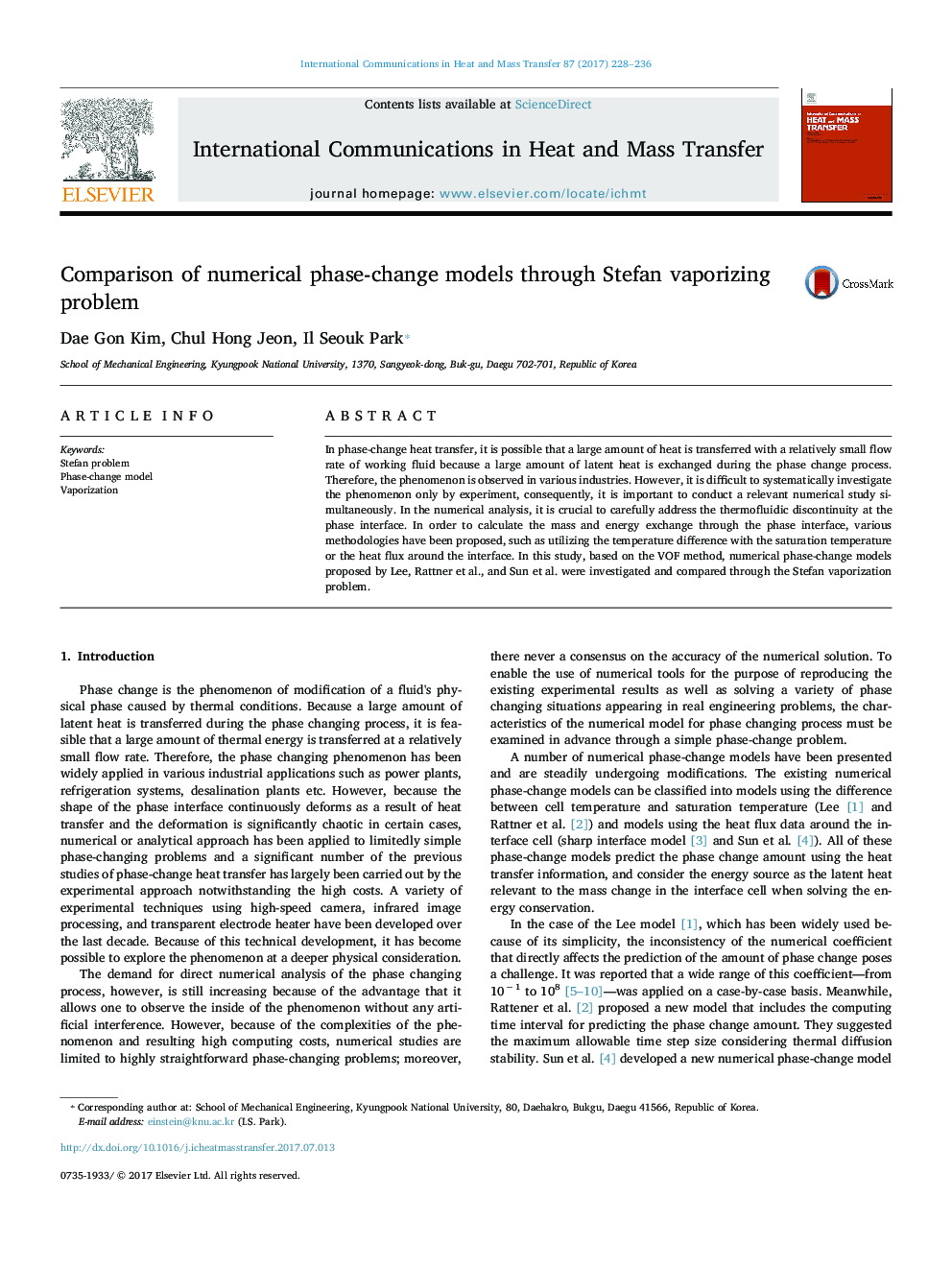| Article ID | Journal | Published Year | Pages | File Type |
|---|---|---|---|---|
| 4992832 | International Communications in Heat and Mass Transfer | 2017 | 9 Pages |
Abstract
In phase-change heat transfer, it is possible that a large amount of heat is transferred with a relatively small flow rate of working fluid because a large amount of latent heat is exchanged during the phase change process. Therefore, the phenomenon is observed in various industries. However, it is difficult to systematically investigate the phenomenon only by experiment, consequently, it is important to conduct a relevant numerical study simultaneously. In the numerical analysis, it is crucial to carefully address the thermofluidic discontinuity at the phase interface. In order to calculate the mass and energy exchange through the phase interface, various methodologies have been proposed, such as utilizing the temperature difference with the saturation temperature or the heat flux around the interface. In this study, based on the VOF method, numerical phase-change models proposed by Lee, Rattner et al., and Sun et al. were investigated and compared through the Stefan vaporization problem.
Keywords
Related Topics
Physical Sciences and Engineering
Chemical Engineering
Fluid Flow and Transfer Processes
Authors
Dae Gon Kim, Chul Hong Jeon, Il Seouk Park,
